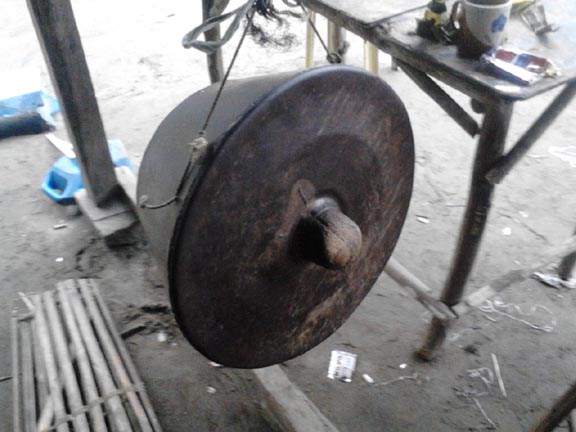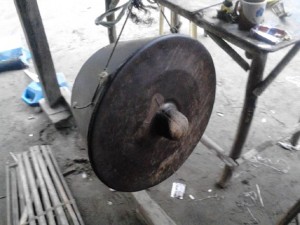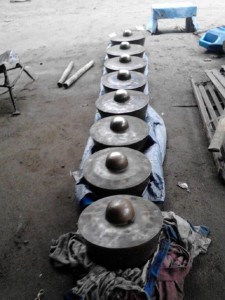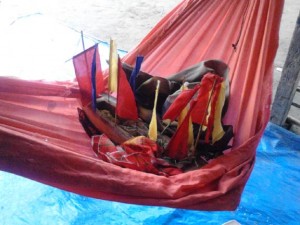
DID YOU KNOW that culture and the arts performances in the Maguindanaon tribe’s culture go beyond performance itself and reaches even the level of traditional healing?
People who grew up in areas with predominantly Maguindanaon or Moro population might know this but for those who had not, this might come as a surprise although it is true.
Travel to Sultan Kudarat
We started fasting on the holy month of Ramadhan on the 10th day of July 2013 and on the 19th of the same month, on a rainy Friday afternoon, relatives from my mother’s side took us from our home in General Santos City.
On board a car painted with black and red, amid a strong rain, they brought us to their residential compound in Barangay Sinakulay, President Quirino, Sultan Kudarat.
While we were still in General Santos, Uncle Phats said the plan was to resolve how to make things “easier” not only for me but also for my mother and father. At the time, I wondered what that supposed to mean.
My father, mother, and I left General Santos with my maternal relatives, leaving my two younger sisters behind in the care of my Aunt Dheds.
In Barangay Sinakulay, we stayed at Uncle Pansal and Aunt Sittie’s place.
Visit to Doctors
At 1:10 a.m. on the 27th day of July I had woken up to the thought that I was perfectly normal. I remembered the two psychiatrists that I had visited. Earlier during the month and back in May 2011 I was escorted to see a doctor – a different doctor on each occasion. At the first visit I was treated due to bipolar disorder. At the second visit I was treated due to schizophrenia.
Was I “crazy” to have the second visit take place? No, I was not and still am not. But different people experience different things while they live in this world. At some point, when I heard people talk I thought they were talking about me – all the time. And conspiracy theories kept playing in my mind. On both visit to doctors, I took medications.
On the 28th day of July at 1:43 p.m. to 1:44 p.m., my father handed me his phone from the outside through the window while I was resting in the “langgal” (prayer hall). On the phone was my grandmother and she asked how I was. I said I was fine and that we were fine. She cried. I told her not to cry and I handed the phone back to my father. He also told her not to cry and then he left.
Buying Goods
On the 29th, my father, mother and I went to Tacurong City on board a tricycle by cousin Mareniza’s husband, Gardo, who drove it. At first, Gardo dropped off a female passenger at the commercial district. After which, he dropped us off at Uncle Phats and Aunt Heria’s residence. Uncle Phats was not around at the time. He is a police officer and he was on duty.
At 9:05 a.m. to 9:55 a.m., mother and I went to the Tacurong City Public Market to buy some goods. We bought white “pilit” rice, cabbage, and pineapple. Mother also looked for black “pilit” rice but we found nothing of the sort in the public market. She said the stuffs would be used for an upcoming “kanduli” (thanksgiving).
After which, we returned to Uncle Phats and Aunt Heria’s house. Aunti Heria said my father had just left for travel to General Santos City. We traveled back to Barangay Sinakulay aboard the tricycle of Gardo from 3:15 p.m. to 3:55 p.m. Aunt Sittie said the black “pilit” rice could be bought in Buluan, Maguindanao, a nearby municipality.
The morning of the 30th day July was foggy. At 5:40 a.m. the surrounding was still full of “lenus” (fog in Maguindanaon). At around 3:00 p.m., my father together with my sisters Normia and Farisha arrived at Barangay Sinakulay on board the tricycle of Gardo.
Moon-sighting was done on the night of the 7th of August. If the moon was seen, according to Islamic scripture, we would have to break our fast on the morning, celebrate Eid’l Fitr, and have a congregational prayer. But the moon was not seen, and according to Islamic scripture, we would have to fast for another day and celebrate Eid’l Fitr on the following day – on the 9th to be exact. So we did.
Thanksgiving and Traditional Healing
The 11th day of August seemed an ordinary day. But on the afternoon, a woman and four men arrived on a tricycle in Barangay Sinakulay with traditional Moro decorations with them. It must be for the thanksgiving, I thought.
But what followed was beyond simple thanksgiving. It was a night and morning of traditional Maguindanaon and Moro music, dances, and delicacies. And with “agong”, “kulintang”, and “debakan” (a makeshift plastic drum) being played, “kelung” (a wood decorated with small seashells that create sounds when shaken in the air) being waved, and “kampilan” (a kind of Moro sword) being brandished it was surely no picnic.
It was traditional healing and it was through performances and foods related to Maguindanaon and Moro ethnic culture and the arts.
The “Summon”
After supper, I was called to join the other people who had gathered outside the house of Gardo and cousin Mareniza. I stepped out of the house of Uncle Pansal and Aunt Sittie and walked over.
As I turned a corner, I noticed that outside Gardo and Mareniza’s house, a blue “trapal” of about two and half meters width and six meters length had been laid out. On it were two “kelungs”, two “kampilans” and a small canoe decorated with two blue, four red, four yellow flaglets. There were also one plate and two pots on it with one distinct Moro delicacy on each.
A red hammock was hanging above one side of the “trapal”. Outside the area of the “trapal” was a suspended “agong”, laid-out “kulintang”, and positioned “debakan” – all ready to be played.
Traditional Healing Through Foods and Music
Did you know that in traditional healing through ethnic culture and the arts performances in the Maguindanaon tribe’s culture the rehearsal in playing the musical instruments is as important as the actual playing of the instruments themselves?
The rehearsal in playing the musical instruments is an essential part of gaining everybody’s hearts and minds in setting the whole mood for the entire occasion.
The players of the musical instruments that night tried so hard to build rapport among themselves for the occasion. They consider all occasions where they have played the instruments distinct from one another.
In each occasion, each sound of each musical instrument means something. In each rehearsal and actual playing of instruments, each harmony of the musical instruments means potential healing of the one who was ill.
And each occasion also includes traditional Moro delicacies for the ill, for the performers, and for everyone.
Night and Morning of Foods and Music
After they have practiced playing the “agong”, “kulintang”, and “debakan”, Kures, the woman leader of the performers asked me to pick one from the three delicacies that had been put in the plate and pots under the hammock and put it in the canoe.
On the plate was a “balebed” (a rice cake made from white “pilit” rice and wrapped in banana leaf), and on the pots were “panyalam” (a brown rice cake made from ordinary white rice) and “sulabay” (a yellow rice cake made from ordinary white rice).
I picked one “sulabay” out of curiosity because I had not eaten one before and put it in the canoe. She also asked the others to do the same.
When everybody had put their chosen food in the canoe, the woman expressed hope that any illness that everybody had would be vanished and she put the canoe on the hammock and swung it lightly.
After which, she uttered in great length some mysterious and lyrical Maguindanaon words that were difficult to decipher and then danced with the “kelung” in her left hand and “kampilan” in her right hand. This whole thing is called “tunong” in Maguindanaon.
Kures also ate two raw eggs and sipped fresh coconut water. She even spat out some of the coconut water to some people. And another male performer joined Kures in dance also with “kelung” and “kampilan” in hands.
There had been some occasions when Kures and her team would call for a break for everybody to take rest. And in the morning the whole thing was repeated again.
Healing and Love
There was a time when the blink of red and yellow lights of cars appeared to be so strange to my eyes, and my mind was stressed out due to many factors.
Whether it was rest that helped me recover fast or the traditional healing through ethnic culture and the arts performances – and delicious foods – helped in my recuperation I do not want to push a closed conclusion. Medical and religious discussions are both another stories.
For one thing, I am a Maguindanaon and Bangsamoro and I have a culture that is distinct from the culture of the foreign colonizers who occupied my homeland. The occasion was a gift to me by my Uncle Pansal, Aunt Sittie, and their children, especially the wonderful couple Kaka Mhods and Marigen, and Nas.
As shared by Kures on a break during the night, “There was a time when lovers develop their feelings for each other through mere playing of the traditional musical instruments.”
“They understood each other,” she added. “That was how my father got my mother.”
I am proud of my culture. (norodin@outlook.com.)



